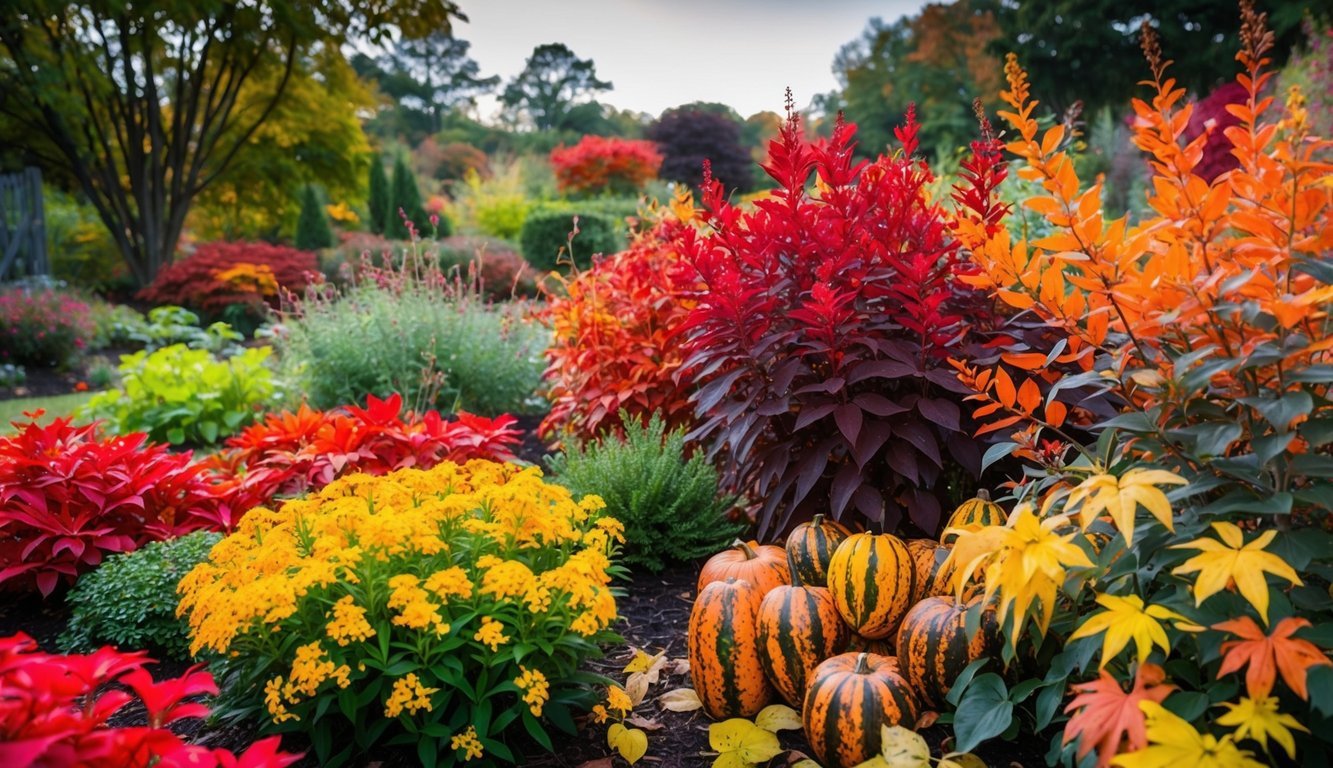
Join us as we immerse ourselves in the enchanting garden of Kevin Kelly, a dedicated contributor from Harrisburg, Pennsylvania.
Renowned for its beauty throughout the year, Kevin’s garden tells a story of his commitment and evolving perspective on gardening.
While previous features have showcased various seasonal transformations and textural diversity, November reveals a special charm that deserves a closer look.
Autumn’s Splendor in Kevin’s Garden
Nestled within a 1/3-acre suburban lot in Zone 7a, Kevin’s garden stands resilient despite the dry conditions that lingered in October.
As he reflects on his 25-year gardening journey, the landscape has transitioned from a bare canvas to a flourishing ecosystem, embracing a more naturalistic aesthetic over the years.
As we take a wider view of his front yard, we notice the winterization process he has embraced.
Leaving plant stems standing tall not only provides shelter for wildlife during the frigid months but also adds visual allure to the landscape.
A notable feature is the crevice garden on a gently sloping area, home to the Berry Poppins® winterberry (Ilex verticillata ‘FarrowBPop’), a hardy species that thrives in Zones 3–9.
Basking in the afternoon light, the ‘Koto-no-ito’ Japanese maple (Acer palmatum ‘Koto-no-ito’) radiates warmth, complementing the striking ‘White Tigress’ Manchu striped maple (Acer tegmentosum ‘White Tigress’), known for its brilliant yellow autumn leaves and uniquely striped bark.
Looking back at his earlier choices, Kevin wishes he could have included the native snakebark maple (Acer pensylvanicum) earlier, which was unavailable two decades ago.
The Beauty of Nature’s Design
The autumn narrative continues with the ‘Peve Minaret’ bald cypress (Taxodium distichum ‘Peve Minaret’), a dwarf conifer flourishing in the moist area near his driveway.
To the right, the Lady in Red™ ninebark (Physocarpus opulifolius ‘Tuilad’) stands out, while on the left, the ‘Little Honey’ oakleaf hydrangea (Hydrangea quercifolia ‘Little Honey’) has sadly succumbed to overshadowing nearby plants.
From his neighbor’s property, Kevin captures a glimpse of his east border.
Here, he embraces a hands-off approach by allowing fallen leaves to remain in the flower beds through the autumn season.
This method not only eliminates the necessity for wood mulch but also utilizes the plants as effective ground cover.
The vibrant hues of ‘All Gold’ Japanese forest grass (Hakonechloa macra ‘All Gold’) and eastern bluestar (Amsonia tabernaemontana) flourish under November’s gentle warmth.
Standing tall and proud in Kevin’s landscape, the ‘Green Vase’ zelkova (Zelkova serrata ‘Green Vase’) serves as a remarkable substitute for elms, providing shade while fitting seamlessly into smaller gardens or as an elegant street tree.
A Retreat in Nature
In the western part of the yard lies the Pollinator Garden, a vibrant section where the ‘Duke Gardens’ Japanese plum yew (Cephalotaxus harringtonia ‘Duke Gardens’), celebrated for its resilience against deer and adaptability to different light conditions, takes center stage.
Behind it, the native ‘Ruby Ribbons’ switchgrass (Panicum virgatum ‘Ruby Ribbons’) enhances the visual diversity.
November casts a spell over the garden, particularly among the dried flower heads, like the ‘Autumn Fire’ sedum (Hylotelephium spectabile ‘Autumn Fire’).
When kissed by the sun’s rays in the morning or evening, these blooms become particularly captivating.
Adding to the autumn palette, the ‘Snow Queen’ oakleaf hydrangea (Hydrangea quercifolia ‘Snow Queen’) enriches the shrub layer with its delightful fall colors.
As the cool autumn evenings set in, a cozy retreat with a fire table awaits in the backyard, perfect for relaxing and unwinding after a long day.
Thank you, Kevin, for allowing us to explore your breathtaking garden once more.
Each season unfolds a new chapter in your landscape, and your thoughtful plant selections create an inspiring autumn tapestry.
Source: Finegardening

